Group, sort, filter, and format trace column data
You can group, sort, filter, and format traceability column data in the Trace window before printing or exporting the data for a report.
Change the column order
To change the order of columns for any Trace window category, drag a column header to a new position.
Use the column editing commands
Right-click any column header in the Trace window to open the Column menu that has commands you can select to manipulate the data.
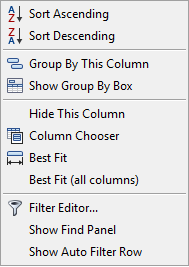
The following table describes the Column menu commands.
Column menu command | Description |
|---|---|
Sort Ascending | Sorts column data in ascending order (A-Z). |
Sort Descending | Sorts column data in descending order (Z-A). |
Clear Sorting | Removes all previously-applied sorting of column data. |
Group By This Column | Adds this column to the grouping. You can also drag a column to the header area to group the data. After columns are grouped, you can drag and drop them in any order. |
Show/Hide Group By Box | Hides or displays the column grouping area. |
Remove this Column | Removes a column from the table. |
Column Chooser | Opens the Customization dialog where you can select the columns you want to be visible. 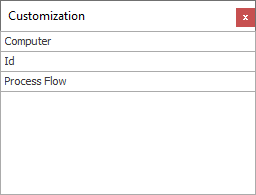 Tip When you hide all columns, the data table is blank. You can drag columns one-by-one back into the data table—this is an easy way to help you put only the data you need into the table and is very useful when you have many blank or unnecessary columns. |
Best Fit | Resizes a column width to the widest entry in that column. |
Best Fit (all columns) | Resizes all column widths so that the widest entry in each column is visible. |
Filter Editor |
Note For detailed information about using the Filter Editor commands, see Filter column data. Allows you to filter a column using various statements and values:  |
Show/Hide Find Panel | Displays/hides a search box where you can enter search keywords and terms. When you select the Find button, your search terms are highlighted in the data table (if found).  |
Show/Hide Auto Filter Row | Shows/hides a row under the selected column heading so you can filter a column on just the data you enter in the filtering row. |
Clear All Filters | Removes all applied filtering from all columns. |
Hide Column | Removes the selected column from the data table view. (You can restore a column with the Column Chooser.) |
Use the Custom AutoFilter menu
When working with DataMiner workbook data (specifically data tables), custom column data filtering options are available that you can use to filter data in a more granular way.
Note
For details about creating a custom filter and filtering parameters, see Filter column data
To view the Custom AutoFilter commands, select a column header, select the small "pushpin" icon to the right of the column title, then select (Custom) from the menu that displays.

In the Custom AutoFilter dialog, specify the desired data filtering criteria, then select OK.
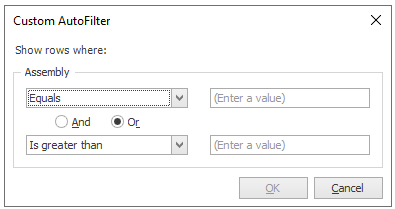
Filtered results are displayed at the bottom of the data and will be used for your data table. Select the Edit Filter button to the right of the custom filter to edit the filter parameters. To delete the custom filter, select the Close box to the left of the custom filter description.
to the left of the custom filter description.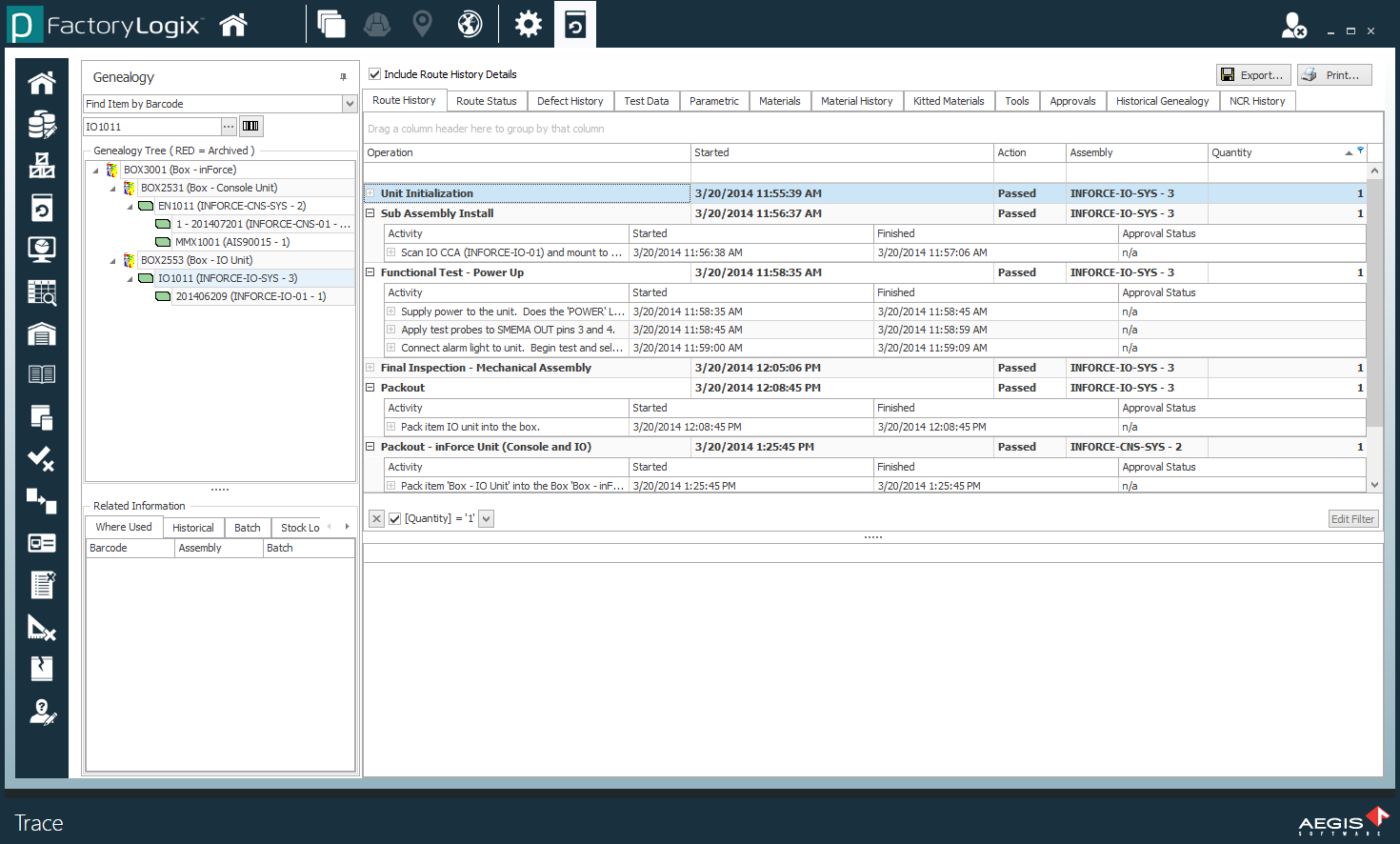
Use summary commands for grouped column data
After you group column data by one or more data fields, the data can be summarized at the footer of the column (the blank area just below the last cell in the grouped column).
To summarize column data, right-click the footer of a grouped column, then select a command.
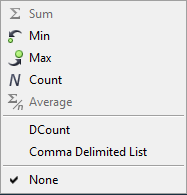
The summary commands are described in the following table.
Command | Description |
|---|---|
Sum | Adds all values to get the total sum. |
Min | Displays the minimum value contained in the column. |
Max | Displays the maximum value contained in the column. |
Count | Displays the count of values contained in the column. |
Average | Displays the average of all the values in the column. |
DCount | Calculates the number of distinct (unique) values in the column. |
Comma Delimited List | Lists the contents of the column in a comma separated list. |
Tip
The summary commands are helpful when creating charts. The size or length of a bar or indicator in a chart is determined by the column summary values.
Expand or collapse grouped column data
To expand or collapse grouped column data for easier reading, right-click above a column header and select Full Expand or Full Collapse.

